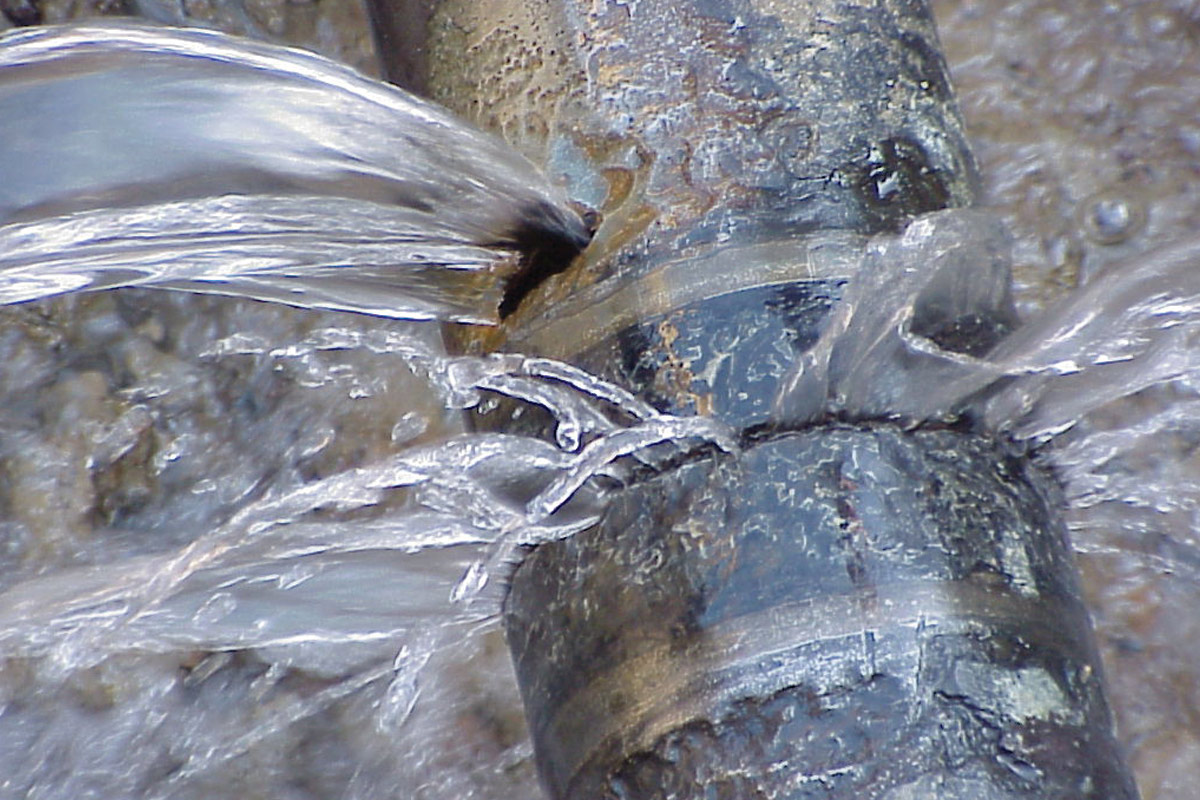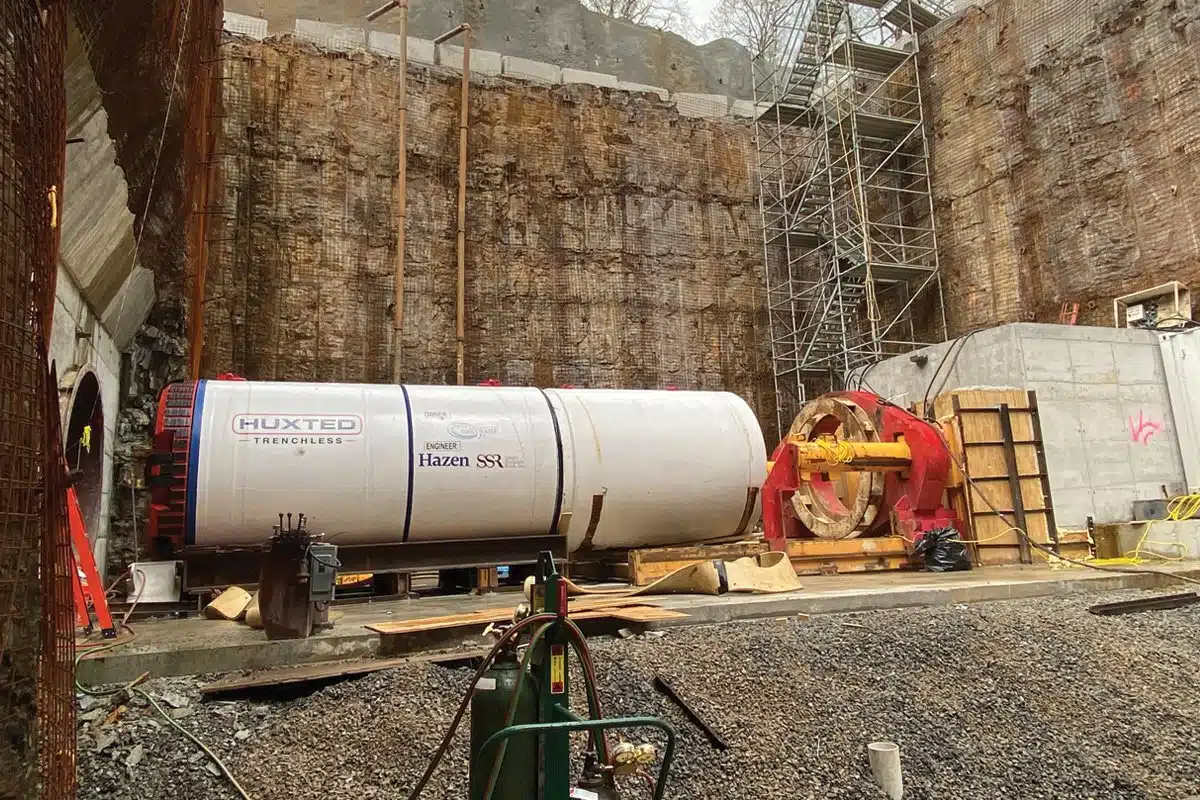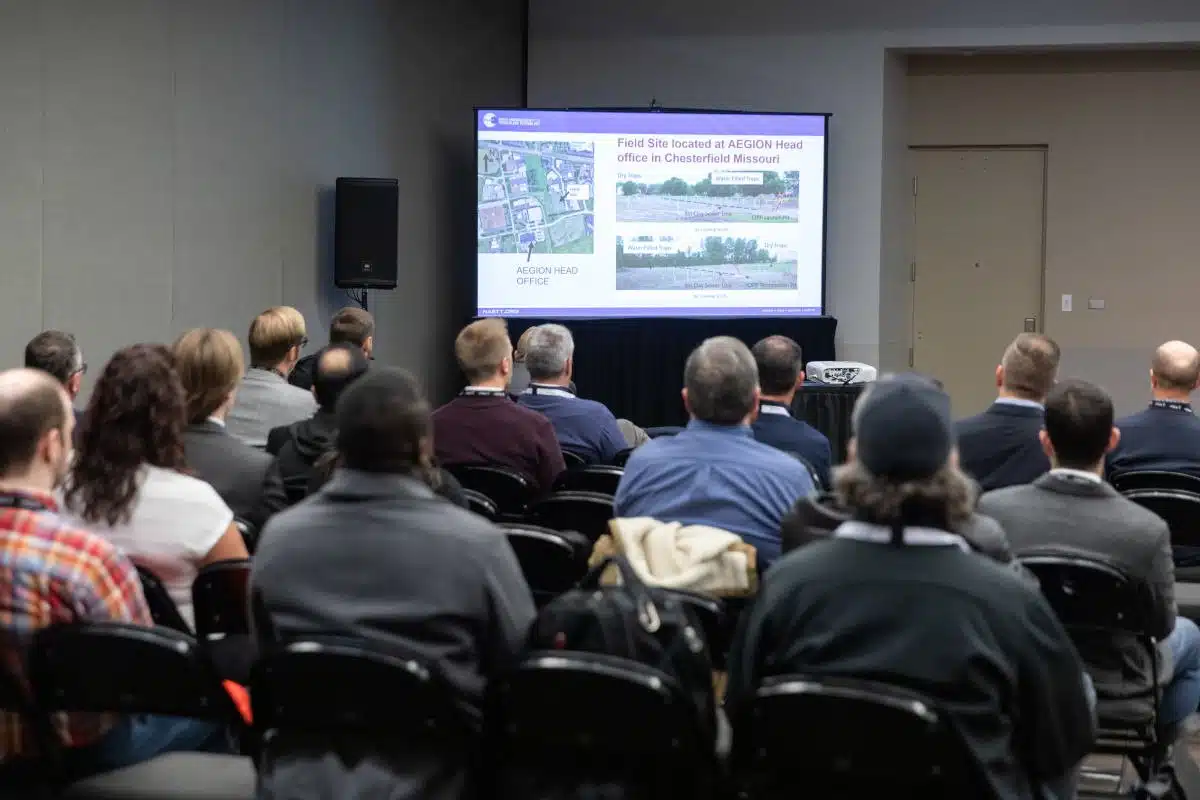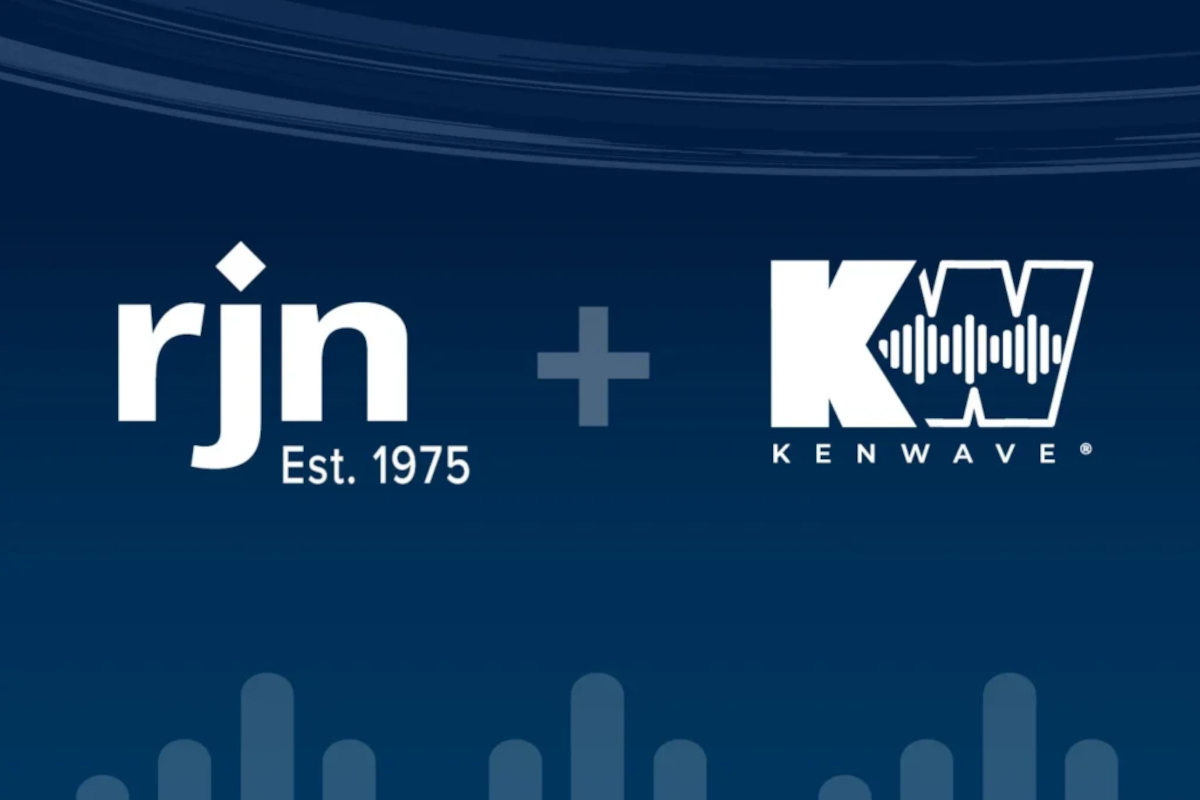
HDD Deep Under ‘Ring Road’ Saves Highway
August 25, 2015
Boring down nearly 11 m (36 ft) enabled a new potable water pipeline to be installed in 14 days without disrupting above ground construction or soils by trenching, which could cause unwanted settlement of the new ring of multi-lane roadway.To serve the City of Edmonton, Alberta, Canada, an existing potable water service line had to be connected under the North East Anthony Henday Drive (NEAHD) ring road. When completed in late 2016, the $1.8 billion ($818.8 million U.S.) highway project will connect the northwest and southeast parts of Anthony Henday Drive from Manning Drive to Whitemud Drive East. Work includes the construction of 27 km (16.7 miles) of six- and eight-lane divided roadway, nine interchanges, two road flyovers, eight rail crossing (flyovers) and two bridges across the North Saskatchewan River, for a total of 46 bridge structures. Using the Public-Private Partnership (P3) process, it is anticipated that the road will be finished three years earlier than through conventional methods.
The 549-m (1,800-ft) pipeline needed to be monolithic and joint free to reduce the risk of any issues such as leaks, joint separation or other problems that can be found with traditional products and materials. Operating pressure is 200 psi.
The decision was made to use horizontal directional drilling (HDD) for the pipeline using 450-mm (18-in.) diameter DR 11 PE4710 high density polyethylene (HDPE) pipe from WL Plastics, of Fort Worth, Texas. The drill was through clay and gravel substrates, which posed a challenge but was successfully completed. Each end of the drill involved reconnecting the HDPE to existing ductile iron and PVC bell and spigot water mains. Because of the soil conditions, overall length and depth of the installation, it was decided that there would be inspections and monitoring milestones throughout the course of the project.
This was a deep bore that hit a few voids along the way. The soil is mostly clay but the HDD crew would hit pockets of sand that would cause the head to drop. The reamer head weighed about 1,600 lb and would drop when it got to that wet, silky material and was hard to hold it on the path. Different kinds of drilling mud were used to solve the problem.
The crew made several passes until the final 450-mm (18-in.) HDPE pipe was pulled. The first was 6.5 in. followed by 18 in. and ending with 28 in. on the last bore.
Four milestone inspections were established for the construction process in order to raise confidence in line construction to help ensure a problem free system. They were categorized as:
1. Inspection of the pipe during and after the delivery and unloading at the work site.
2. Monitoring and recording of all fusion conditions, fusion processes (including pipe staging area) and assembled storage.
3. Monitoring of the pipe pulling process once pilot holes where completed via HDD.
4. Monitoring of the pressure testing and disinfection process.
Safety aspects and milestones expectations were reviewed, communicated and responsibilities assigned prior to starting any process for handling, assembly, installation and testing. This provided clarity for individual responsibilities, timing, accountabilities and what to do if unusual circumstances occurred.
WL Plastics was asked to assist in monitoring all these milestones. When the aspects of design, manufacturing, handling and installation are conducted in accordance to specified industry design and procedures, the life cycle of HDPE installations, according to WL Plastics, will meet or exceed expected service lives, which reduces costs for generations to come.
The 18-in. diameter (450-mm) IPS DR 11 PE4710 line required product approval in accordance with the local utility’s construction standards. The pipe was produced at the WL Plastics Calgary, Alberta plant in accordance with ASTM F714, AWWA C906 and Factory Mutual requirements. The WL Plastics pressure-rated PE4710 pipe is manufactured from engineered polyethylene compounds (WL106B) that provide a balance of short-term and long-term properties for pressure-pipe applications. The PE4710 pipe resists pressure surges, handling and installation, soil subsidence, frost heave and seismic displacement.
The 549-m (1,800-ft) PE4710 pipeline had no lateral connections but needed to be connected to both existing steel and bell and spigot PVC at either ends. For the PE4710 pipe sections, there were 36 fusions, which where all data logged, monitored and inspected for consistency. Each fusion included proper cleaning of the pipe, properly aligning pipe in fusion machine, closely checking the pipe after facing, cleaning and measuring both sides of heater plate, monitoring heat soak and heat bead formation, visually inspecting every heated fusion interface once the heater plate was removed, bead formation once interfacial pressure was applied and cooling times with consideration for warm ambient conditions.
Once the pipe was properly cooled and removed from the fusion machine the length of pipe was pushed out and placed on rollers to protect against scouring or gouging and also to reduce friction forces when pulling the pipe through the boarded hole. After the entire line was fused together and inspected one last time, the drill was pulled back.
Once installed, a minimum period of 24 hours was provided to allow for any “pull back” or “shrinkage” of the pipe prior to reconnecting to existing ends. “The higher performance of this PE4710 pipe provides a very durable system due to its improved properties,” said Camille Rubeiz, P. E., director of engineering for the Plastics Pipe Institute Inc.’s Municipal Division. PPI is the major trade association representing all segments of the plastic pipe industry.
“It is designed for water and wastewater applications meeting AWWA C906 and ASTM F714 standards and because it is strong and durable, it is the material of choice for trenchless applications such as HDD, sliplining and also for pipe bursting.”
Once stabilization of the pipe length was finished, the pipe was connected to the existing ends and filled with water. The final stage of the installation was the pressure testing of the newly installed HDPE section. Hydrostatic pressure testing was conducted once the line was filled with water and all air was removed from the system. It was pressure tested to ensure no leakage or pipe separation had occurred during installation. Once stabilized the pressure was held for an hour to ensure no leaking occurred. None occurred over the entire 1,800 ft or in any of the 36 fused joints, and the line was approved for operation.
“The benefits of this installation is that HDPE piping is considered leak free and corrosion resistant,” explained Richard Kolasa of WL Plastics and a certified engineering technologist, plastics and polymer engineering. “For the NEAHD millions of infrastructure dollars were spent on the ‘ring road’ highway, therefore digging open trenches and ripping up the road was impossible. Plus the project required a pipeline with high integrity that would last for many years.”
“The other benefit was the installation itself. Cost reductions were realized because the open trench would have been close to 20 m (65 ft) in depth and wide. Using HDD there was hardly any evidence that the new pipeline was installed. In addition to the labor, backhoes, trucks and use of trench boxes, excavating a deep trench caused concern of settling soils under the roadway. The last real benefit for PE4710 pipe is the resistance to surge events and freezing resistance. We are extremely confident that the new PE4710 water transmission line section under the North East Anthony Henday Drive will provide reliable flows and a maintenance-free system for many years to come.”
Steve Cooper has been reporting on the water and pipe industries for several decades.





